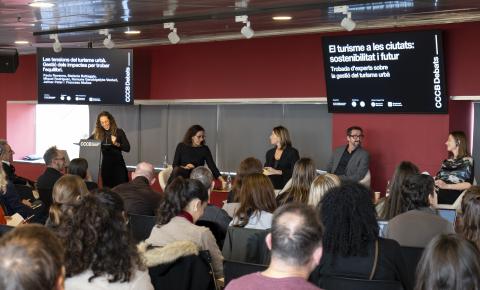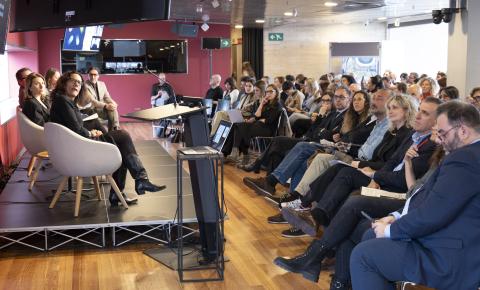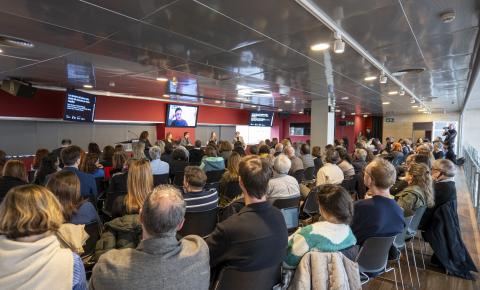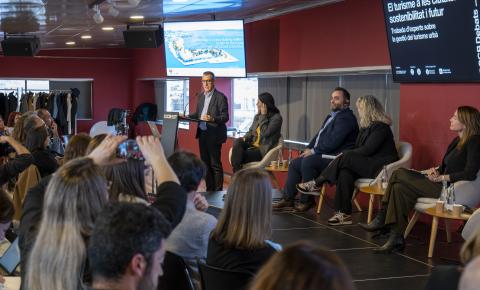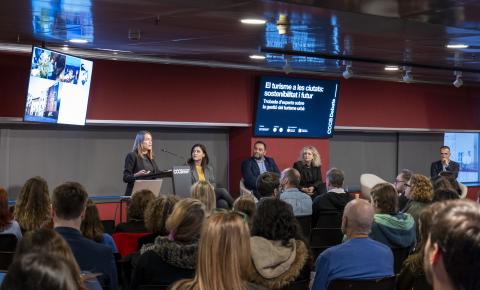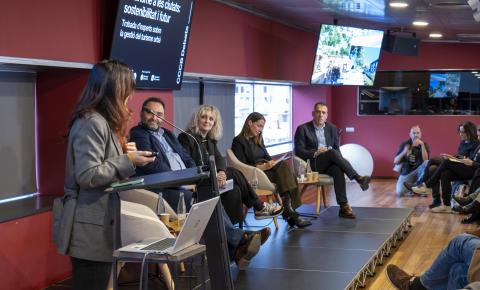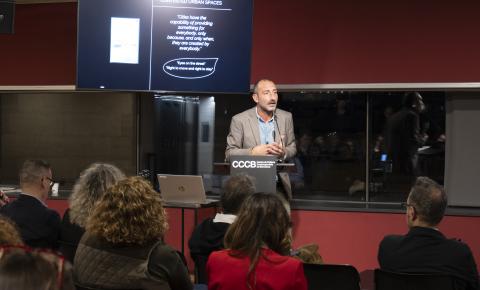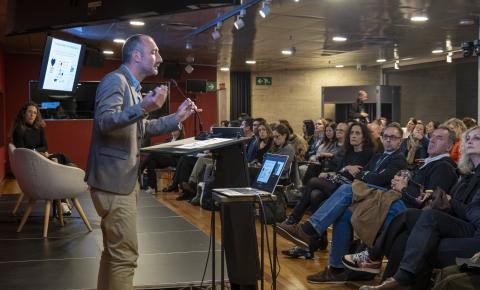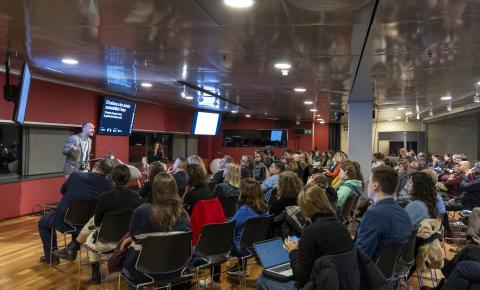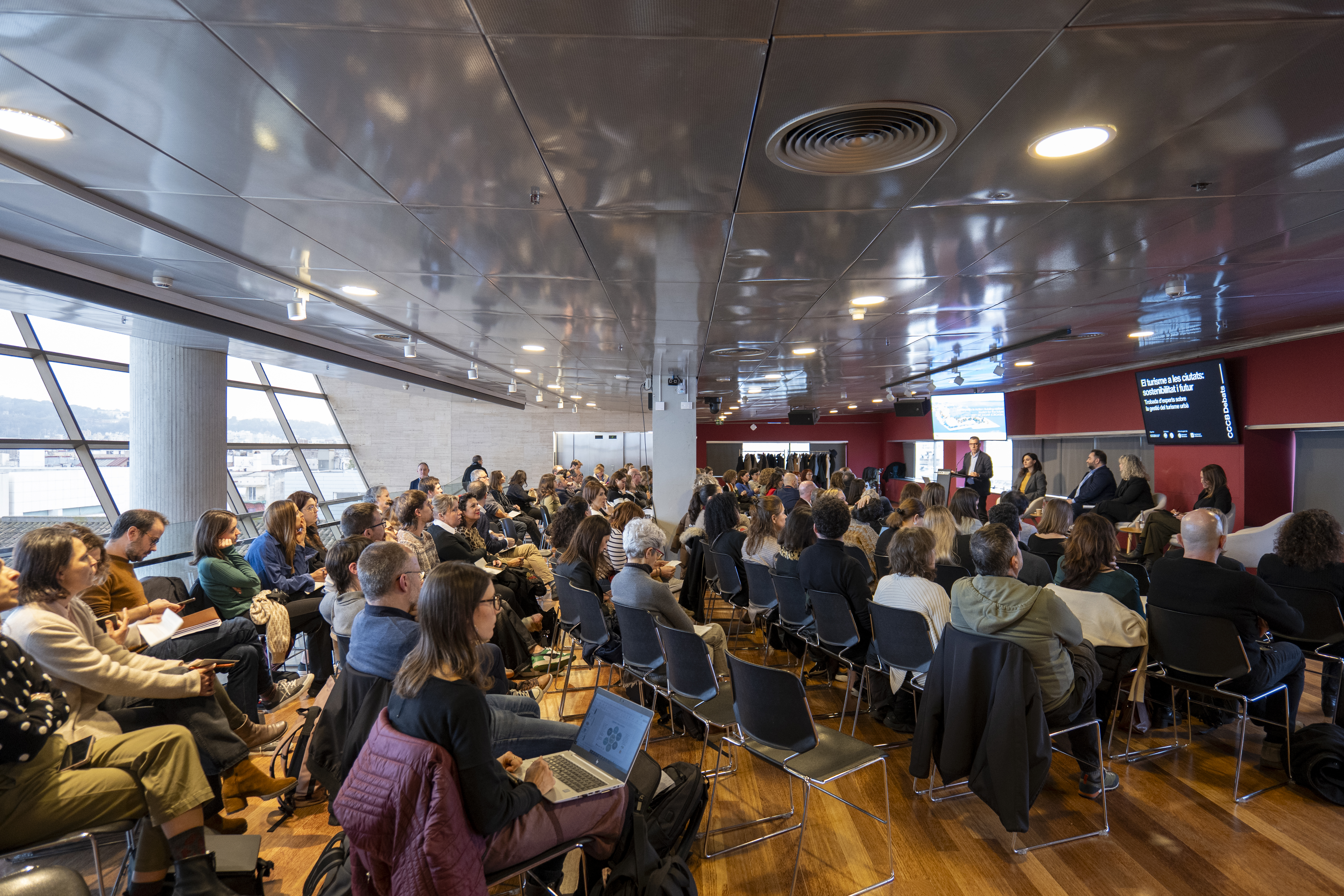
Tourism in Cities: Rethinking Sustainability and the Future
On the side of the Sustainable Tourism Partnership in-person meeting in Barcelona, members of the Partnership along with local stakeholders and experts tackled these questions in a vibrant debate, part of a series of debates organised by the City of Barcelona and the Provincial Council of Barcelona.
The Global Challenge - Managing the Unmanageable?
Francesc Muñoz, moderator of the first roundtable, set the tone with a bold challenge: “With over a billion tourists in 2024, isn’t the word ‘overtourism’ too small to describe the scale of this phenomenon?”. Tourism, he argued, follows a territorial logic—a cycle of generation, management, and regulation. The real question: Is there a way to break free from it?
Venice, a city that has become the symbol of both tourism’s grandeur and its excesses, is now firmly in the regulation phase. Paola Ravenna and Stefania Battaggia from the City of Venice presented data-driven insights, revealing that on some days, tourists triple the number of residents. Their response? A set of initiatives, among them, the Access Fee, a bold experiment to redefine the city’s relationship with visitors, showing early signs of impact.
Barcelona, another global tourism powerhouse, framed the discussion differently. With 150,000 workers in the tourism sector and tourism ranking as the city’s third-largest source of income, the challenge lies in balancing economic benefits with community well-being. The city’s strategy, introduced by Miquel Rodríguez, spans 12 key intervention areas, including the reconversion of 10,000 tourist apartments back into local housing—a radical step toward rebalancing urban life.
Zooming out to the European level, Ramune Genzbigelyte-Venturi from Directorate-General for Mobility and Transport (MOVE) placed tourism within the broader EU policy landscape, highlighting its importance in sharing values, pinpointing upcoming initiatives and the critical role of data-driven forecasting in shaping sustainable tourism policies.
But what happens when a city becomes a victim of its own success? Jelmer Peter shared a cautionary tale: Amsterdam, once a champion of tourism-driven economic growth, now finds itself trying to slow down. Tourism taxes and rethinking public space have become essential tools in restoring a sense of balance.
From the audience, pressing questions emerged:
- Do we need new carrying capacity studies for cities overwhelmed by visitors?
- Are we at risk of turning entire urban centers into open-air museums, frozen in time for tourists?
- How should city governments collaborate with Destination Management Organisations (DMOs) to avoid mismatched priorities?
A Shift in Scale - Can smaller cities offer the answer?
The second discussion moved from global destinations to smaller-scale cities — where the challenges are not just about managing crowds but about attracting the right kind of visitors. Josep Rodríguez, moderating, framed the shift: Some things cannot be delocalized — how do smaller cities define their own tourism narratives?
In Zadar tourism growth is evident, but strategies are shifting. Stefani Mikulec Perković showcased decentralization initiatives designed to extend visitor stays beyond day trips, spreading economic benefits more evenly.
Ioannis Pappas from the City of Heraklion took a different approach, arguing that cultural heritage can be more than just a backdrop for mass tourism. By integrating tangible and intangible heritage, combined with digital tools Heraklion is crafting immersive and alternative tourist experiences.
In Prato, a city often overshadowed by nearby Florence, Chiara Bartalini demonstrated how the textile industry has been transformed into a case study of industrial tourism—proving that even manufacturing heritage can create unique visitor experiences.
Meanwhile, Emília Torres Miralles from Vilafranca del Penedès embraced its proximity to Barcelona as a strength, offering a countryside escape—from wine tourism to the famous “human castles” festivals.
From the audience, the focus turned to stakeholder engagement and the lasting impact of the pandemic on tourist behavior:
- How involved should local communities be in tourism decision-making?
- Has COVID-19 permanently reshaped how people experience cities?
Keynote Speech: The Vicious Circle of Tourism
To close, Claudio Milano offered a provocative reconceptualisation of tourism—not as an industry but as an ongoing anthropological process. He described an endless cycle:
Touristification → Social unrest & resistance → Search for "authentic" destinations → The rise of "Live Like a Local" travel → New conflicts emerge → Technocratic & tactical solutions → More touristification
But his most striking insight came from a simple but profound notion: “The right to leave and the right to stay.” Tourism and residency are not opposites — tourists and locals are often the same people, and both deserve access to quality urban life.
What's next? - Rethinking of Tourism before it's too late
The discussions made one thing clear: Tourism is no longer just about visitors — it’s about the future of cities themselves.
How much growth is too much? Can cities truly manage tourism without compromising their own identity? And if tourism is an unstoppable force, what role do we want it to play in shaping our urban future?
The Sustainable Tourism Partnership of the Urban Agenda is an active part of the discussion and with its Action Plan tackles aspects of the aforementioned topics.
Photos: ©Albert Miró
